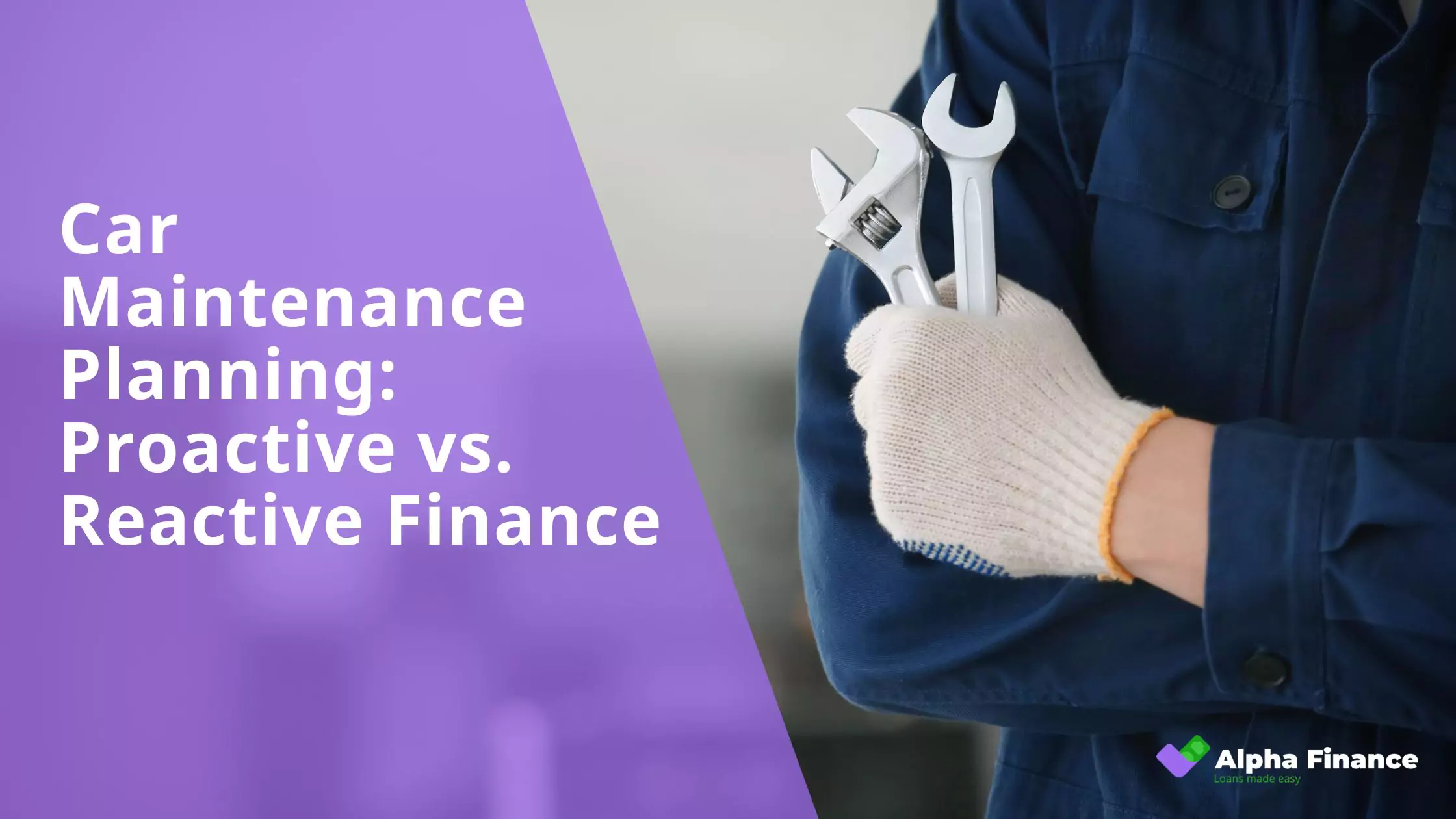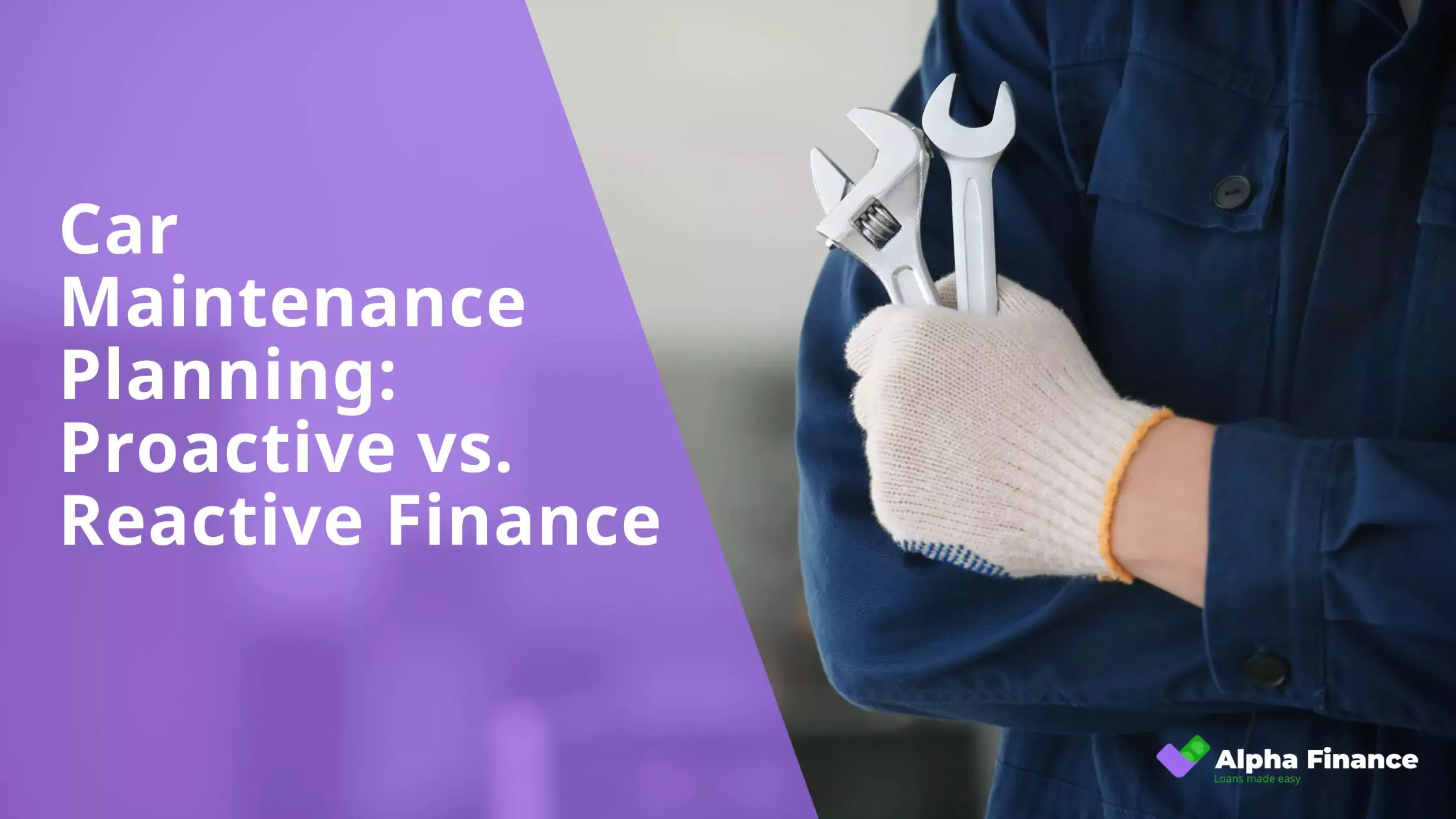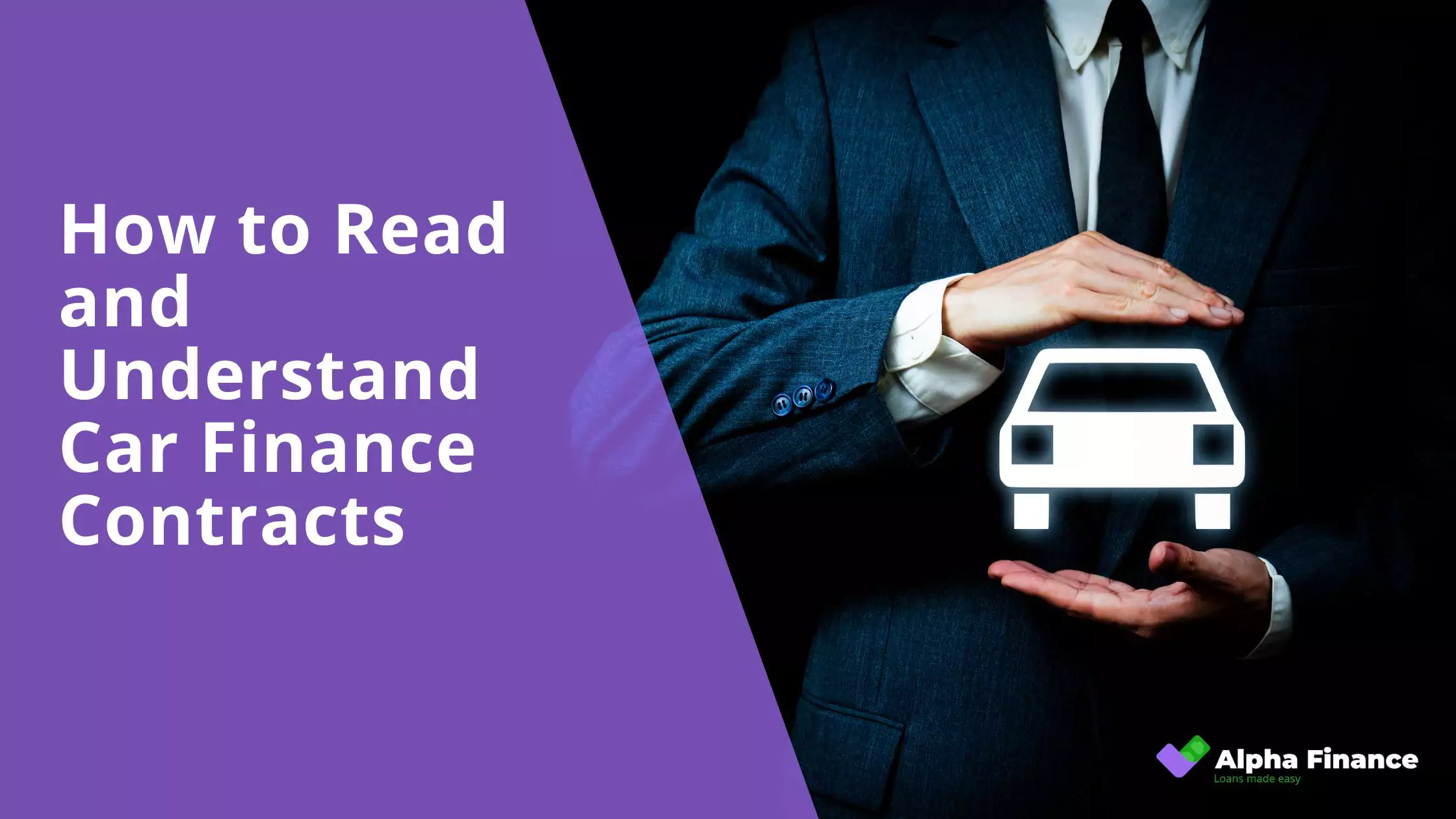Your car is more than just a means of transportation; it’s a significant financial asset that plays a crucial role in your daily life. But imagine the stress and economic burden of an accident without adequate protection. Car accidents, unfortunately, are an unpredictable reality on our roads, and they come with a range of potential financial risks. From damage to your vehicle and other people’s property to the often-substantial costs associated with injuries, the expenses can quickly escalate and become overwhelming.
This is where car insurance steps in as a vital safety net and a smart financial decision. Far from being just another bill, it’s a crucial layer of protection designed to safeguard your financial well-being in the event of unforeseen circumstances. Understanding your policy and the options available is key to ensuring you’re properly covered, whether you purchased your vehicle outright or used car finance Australia to make your purchase. In this blog post, we’ll delve into the various types of car insurance available, what each covers, and how to choose the right policy for your needs. We’ll also break down important terms you’ll encounter, empowering you to make informed decisions and drive with greater peace of mind.
Why Car Insurance is Essential
Car insurance isn’t merely an optional expense; it’s a fundamental and indispensable safeguard for your financial well-being and overall peace of mind. Here’s why it’s absolutely crucial:
-
Protecting Your Own Vehicle:
- Mitigating Repair Costs: Accidents, even minor ones, can result in significant repair bills for your vehicle. Without insurance, these costs fall entirely on you, potentially causing a major financial strain.
- Safeguarding Your Investment: For many, a car is one of their most significant financial assets after a home. If your car is severely damaged (written off) or stolen, insurance can cover its market value, preventing a substantial financial loss and enabling you to replace your transport.
- Peace of Mind: Knowing that your valuable asset is protected from unexpected damage, fire, or theft allows you to drive with greater confidence and reduced financial worry.
-
Protecting Third Parties:
- Legal Liability for Damage: If you are at fault in an accident, you are legally responsible for any damage you cause to other vehicles, property (like fences, buildings, or street signs), or even public infrastructure.
- Avoiding Crippling Expenses: The cost of repairing or replacing another person’s car or property can run into thousands, or even tens of thousands, of dollars. Insurance protects you from these potentially crippling out-of-pocket expenses.
- Legal Requirement (CTP/Green Slip): In Australia, it is a legal requirement to have Compulsory Third Party (CTP) insurance (often called a Green Slip in NSW). This specific cover is designed to protect you from the financial burden of personal injury claims made by people you might injure in an accident (e.g., other drivers, passengers, pedestrians). It’s crucial for protecting human lives and well-being.
-
Financial Security & Peace of Mind:
- Reducing Financial Stress: Accidents are inherently stressful. Having insurance significantly reduces the added burden of financial stress, allowing you to focus on recovery and logistics rather than worrying about mounting bills.
- Swift Recovery and Mobility: With proper insurance, you can often get your vehicle repaired or replaced much quicker, minimising disruption to your daily life and helping you get back on the road sooner.
- Long-Term Protection: Car insurance acts as a critical part of your overall financial planning, protecting your assets from unforeseen events that could otherwise derail your financial stability for years.
Types of Car Insurance Cover in Australia
Navigating the various types of car insurance can seem daunting, but understanding the differences is key to choosing the right level of protection for your needs. Here’s a breakdown of the common types of car insurance available in Australia:
1. Compulsory Third Party (CTP) / Green Slip:
This is the most fundamental and legally mandated form of car insurance across all Australian states and territories.
- Purpose: Its sole purpose is to cover the costs associated with personal injuries sustained by people you might injure in a car accident where you are deemed at fault. This includes:
- Other drivers and their passengers.
- Passengers in your own vehicle.
- Cyclists and pedestrians involved in the incident.
- Key Points:
- Does NOT cover damage to vehicles or property: This is a crucial distinction. CTP offers no protection for physical damage to your car, another car, fences, or any other property.
- It’s mandatory: You cannot register a vehicle in Australia without having CTP insurance.
- Varies by State: In New South Wales, it’s separately purchased as a “Green Slip.” In other states and territories, it’s often included as part of your vehicle registration fee.
2. Third Party Property Damage (TPPD):
This type of insurance goes a step beyond CTP by covering damage to other people’s property.
- Purpose: It covers the cost of repairing or replacing other people’s property if your car causes damage to it. This commonly includes:
- Other vehicles (cars, motorcycles, trucks).
- Fences, buildings, street signs, and other private or public property.
- Key Points:
- Does NOT cover damage to your own car: If your car is damaged in an accident, even if you are at fault, TPPD will not cover your repair costs.
- Uninsured Driver Cover: Many TPPD policies offer a limited amount of cover (typically up to a specific dollar amount, e.g., $5,000) for damage to your own car if it’s hit by an uninsured driver, provided you can identify the at-fault party.
3. Third Party Fire & Theft (TPFT):
This policy builds upon the coverage offered by Third Party Property Damage, adding specific protections for your own vehicle.
- Purpose: It includes all the benefits of TPPD, plus it covers damage to your own car if it is:
- Stolen: Covers the market value of your vehicle if it is stolen and not recovered.
- Damaged by fire: Covers repair or replacement costs if your car catches fire.
- Target Audience: This is often a good option for owners of:
- Older cars that have a lower market value.
- Vehicles for which comprehensive insurance might not be considered cost-effective based on their value.
- Drivers who want more protection than basic TPPD but don’t need full comprehensive cover.
4. Comprehensive Car Insurance:
This is the most extensive and popular type of car insurance, offering the broadest range of protection.
- Purpose: It provides wide-ranging cover, including:
- Damage to your own car: Covers repair or replacement costs for your vehicle due to accidents (regardless of who is at fault), fire, theft, vandalism, and various other incidents (e.g., hailstorms, collisions with animals).
- Damage to other people’s property: Includes the third-party property damage coverage found in TPPD policies.
- Additional Benefits: Comprehensive policies often come with a suite of extra features and benefits, which can vary between insurers. These commonly include:
- New car replacement (if your car is a total loss within a certain period of purchase).
- Hire car costs after an insured event.
- Towing costs after an accident.
- Emergency accommodation and travel expenses if you’re stranded.
- Cover for personal belongings stolen from your car.
- Key replacement.
- Target Audience: Comprehensive car insurance is highly recommended for:
- New vehicles.
- Vehicles with a high market value.
- Vehicles that are financed through car finance Australia providers, as lenders often require this level of cover.
- Anyone who wants maximum financial protection and peace of mind on the road.
Key Terms and Concepts to Understand
When delving into the world of car insurance, you’ll encounter a specific set of terms that are crucial to understanding your policy. Grasping these concepts will empower you to make informed decisions and ensure you’re getting the right cover.
- Premium: This is simply the amount of money you pay to your insurance provider for your car insurance policy. It’s typically paid annually or in monthly instalments.
- Excess: The excess is the agreed-upon amount you pay out-of-pocket when you make a claim on your insurance policy. Think of it as your initial contribution to the claim cost.
- Standard Excess: This is the base amount you agree to pay when taking out the policy. You can often choose a higher standard excess to lower your premium.
- Additional Excesses: Be aware that additional excesses can apply depending on the circumstances of the claim. Common examples include:
- Age Excess: Applied if the driver at the time of the incident is under a certain age (e.g., under 21 or 25).
- Inexperienced Driver Excess: Applied if the driver has held their licence for less than a specified period (e.g., less than two years).
- Unlisted Driver Excess: Applied if the driver at the time of the incident is not listed on your policy.
- Agreed Value vs. Market Value: This concept is vital when determining how much your insurer will pay out if your car is written off or stolen.
- Agreed Value: A fixed amount that you and your insurer agree your car is worth at the beginning of each policy period. This value remains constant throughout the policy term, providing certainty.
- Market Value: This is the amount your car would likely sell for on the open market at the time of the claim, considering its age, condition, kilometres, and accessories. Market value typically depreciates over time.
- No Claims Discount (NCD) / Rating 1: This is a system that rewards safe drivers.
- How it works: It’s a discount applied to your premium for each year you don’t make a claim on your policy. The longer you go without claiming, the higher your discount can become, reaching a maximum level often referred to as “Rating 1” or “Maximum NCD.”
- Impact of Claims: Making an at-fault claim will typically reduce your NCD, potentially increasing your premium in subsequent years.
- Sum Insured: This refers to the maximum amount your insurer will pay out for a claim on your car (e.g., if it’s written off or stolen). It’s typically the agreed value or market value, depending on your policy.
- Product Disclosure Statement (PDS): This is a critical legal document provided by your insurer. It outlines all the terms and conditions of your policy, including what is covered, what isn’t, excesses, limits, and how to make a claim. Always read your PDS carefully to fully understand your coverage.
Factors Influencing Your Premium
Car insurance premiums are calculated based on a variety of factors that help insurers assess the level of risk involved. Understanding these can help you potentially reduce your costs.
-
Your Personal Profile:
- Age and Driving Experience: Younger and less experienced drivers generally face higher premiums due to statistical data indicating a higher risk of accidents.
- Driving History: Your past record of claims, driving convictions, and demerit points significantly impacts your premium. A clean driving history typically results in lower costs.
- Address: Where you live and park your car can influence your premium. Areas with higher rates of theft, vandalism, or traffic accidents may lead to higher costs.
-
Your Vehicle:
- Make, Model, Year, and Value: More expensive or luxury cars generally cost more to insure due to higher repair or replacement costs.
- Engine Size and Performance: High-performance vehicles are often associated with higher risk and thus higher premiums.
- Safety Features: Cars equipped with advanced safety features (e.g., autonomous emergency braking, multiple airbags) can sometimes qualify for lower premiums as they reduce the likelihood or severity of accidents.
- Security Features: Vehicles with factory-fitted alarms, immobilisers, or GPS trackers may receive discounts due to reduced theft risk.
-
Your Policy Choices:
- Type of Cover Chosen: As discussed, comprehensive cover is more expensive than Third Party Fire & Theft, which in turn costs more than Third Party Property Damage.
- Chosen Excess Amount: Opting for a higher excess (the amount you pay upfront in a claim) can significantly lower your annual premium, as it reduces the insurer’s potential payout.
- Optional Extras: Adding features like roadside assistance, a hire car option, or windscreen cover will increase your premium.
- Payment Frequency: Paying your premium annually in one lump sum is often cheaper than paying monthly instalments, as insurers may charge an administration fee for monthly payments.
-
Usage:
- How Much You Drive: If you drive fewer kilometres per year, some insurers offer lower premiums (e.g., low-kilometre policies), as your exposure to risk is reduced.
- Where You Park Your Car: Parking your car in a secure, locked garage overnight is generally seen as lower risk than parking it on the street, which can influence your premium.
- Purpose of Use: Using your car for private purposes (commuting, leisure) is typically cheaper to insure than using it for business or commercial purposes (e.g., ridesharing, deliveries), which carry higher risk profiles.
Choosing the Right Car Insurance Policy
Selecting the appropriate car insurance policy is a crucial decision that requires careful consideration. It’s not just about finding the cheapest option, but rather the one that best aligns with your personal circumstances and provides adequate protection.
-
Assess Your Needs: Start by evaluating your individual situation.
- Value of Your Car: For a brand-new or high-value vehicle, comprehensive cover is almost always recommended. For an older, lower-value car, Third Party Fire & Theft might suffice.
- Driving Habits: Consider how often you drive, how far, and where you typically park your car. If you’re a low-kilometre driver, some policies might offer discounts.
- Financial Situation and Risk Tolerance: How much financial risk are you comfortable taking on if an accident occurs? Can you afford significant out-of-pocket expenses for repairs or third-party damages? Your budget and risk appetite will guide your choice of excess and level of cover.
-
Compare Quotes Thoroughly:
- Utilise online comparison websites, but don’t stop there. Also, check with direct insurers who might not be listed on aggregators.
- Look Beyond Price: While cost is a factor, focus on what’s actually included in the policy. A slightly cheaper premium might come with higher excesses or fewer benefits. Compare apples with apples.
-
Read the Product Disclosure Statement (PDS) Carefully:
- This is non-negotiable. The PDS details everything your policy covers, but, just as importantly, what it doesn’t cover (exclusions) and any limitations.
- Check Optional Extras: See what additional benefits are offered and if they genuinely suit your needs (e.g., hire car option, roadside assistance).
-
Ask Questions: If any aspect of the policy or PDS is unclear, don’t hesitate to contact the insurer directly for clarification before committing.
-
Review Annually: Your personal circumstances, car’s value, and market premiums change over time. Make it a habit to review your policy at renewal each year to ensure it still meets your needs and that you’re getting a competitive price.
Conclusion
In summary, car insurance is more than just a legal requirement; it’s a strategic investment in your financial security and peace of mind. By understanding the different types of cover available, familiarising yourself with key terms, and knowing what factors influence your premium, you empower yourself to make intelligent choices.
Don’t wait for an accident to truly understand the value of good car insurance. Protect your assets, protect your future, and drive with confidence knowing you’re adequately covered.
Car Loans: Get Behind the Wheel Sooner
For many Australians, owning a car is essential for work, family, and leisure, but buying one outright isn’t always feasible. Car loans provide a flexible solution, allowing you to get behind the wheel of your desired vehicle sooner by spreading the cost over manageable repayments. Whether you’re eyeing a brand-new set of wheels or a reliable used car, exploring your car finance options can make vehicle ownership a reality without impacting your immediate savings. Ready to drive away in your next car? Explore competitive car loan solutions with Alpha Finance Australia today and discover how easy it can be.




